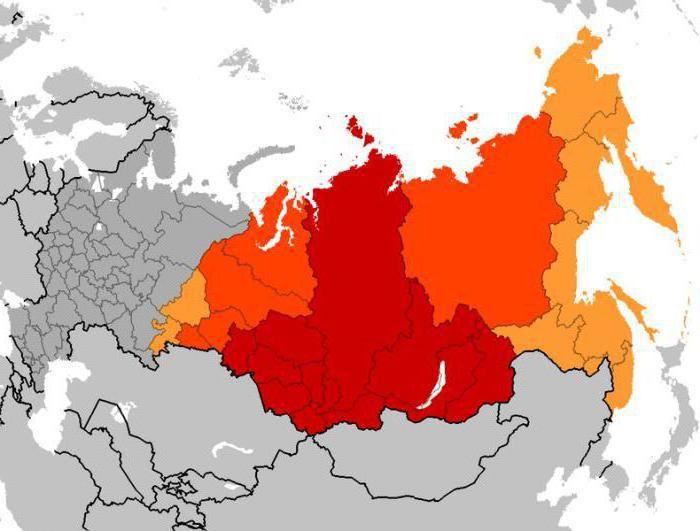Siberia is called a vast region, spread out in the north-eastern part of the Eurasian continent. Often it includes both the north of Kazakhstan and the Russian Far East, which allows us to talk about the huge differences between the regions of Siberia. However, in modern literature, Siberia is increasingly understood as a region bounded from the west by the Urals, the Pacific Ocean in the east and washed by the Arctic Ocean in the north. From the south, the border is the state border of Russia with China, Mongolia and Kazakhstan.

Geography of Siberia
Having decided on the borders of Siberia, it is worth saying that in such a vast region there can be very different climatic and geological conditions. If in the south of Siberia during the hot summer months favorable conditions are created for growing grain, then permafrost reigns in the north.
The icy plains of the north are replaced by taiga and pass into the rocky mountains of Altai. Siberia is rich, due to these geological differences, with minerals and other natural resources - forest, hydropower and numerous opportunities for recreation.
In order to indicate the differences, it is customary to distinguish between Western Siberia and Eastern Siberia, sometimes adding Southern Siberia to this classification to indicate the special ethnogeographic status of the mountainous border regions.

Western Siberia
This region of Siberia includes the space between the Ural Mountains in the west and the Yenisei River in the east. From north to south, the territory stretched for more than two and a half thousand kilometers from the coast of the Arctic Ocean to the Kazakh steppes.
Most of Western Siberia is located on the territory of the West Siberian Plain, a distinctive feature of which are extensive swamps occupying deep depressions. To the southeast, the plain smoothly passes into the foothills of Altai, Salair and Mountain Shoria. The landscape is changing, and with it the climatic zone.
The continental climate manifests itself in almost the entire territory of the regions of Siberia, with sharply defined seasonality. In summer, the temperature ranges from +5 ˚С to +20 ˚С, in winter from -15 ˚С to -40 ˚С. However, despite such severe climatic conditions, the region is of key importance for the entire Russian economy, since there are significant reserves of oil, gas and gold, as well as other metals important for modern industry on its territory.

Eastern Siberia
It stretches from the mouth of the Yenisei in the west to the watershed ridges approaching the Pacific Ocean itself. Like Western, Eastern Siberia is washed in the north by the waters of the Arctic Ocean.
Most of the east of Siberia is covered by impassable taiga, hiding the East Siberian plateau. However, in the north, the landscape is replaced by tundra wastelands, and in the south passes into the Western and Eastern Sayans. But in contrast to Western Siberia, marshland is almost never found in Eastern Siberia, since most of its territory is gravelly eluvium formed due to prolonged erosion of rock.
Another distinguishing feature of the two regions of Siberia is that in the east there is a large amplitude of temperature fluctuations, which reaches 100 ° C in eastern Yakutia. In some areas of this region, warmer temperatures are observed in the summer months than in the European part of Russia.